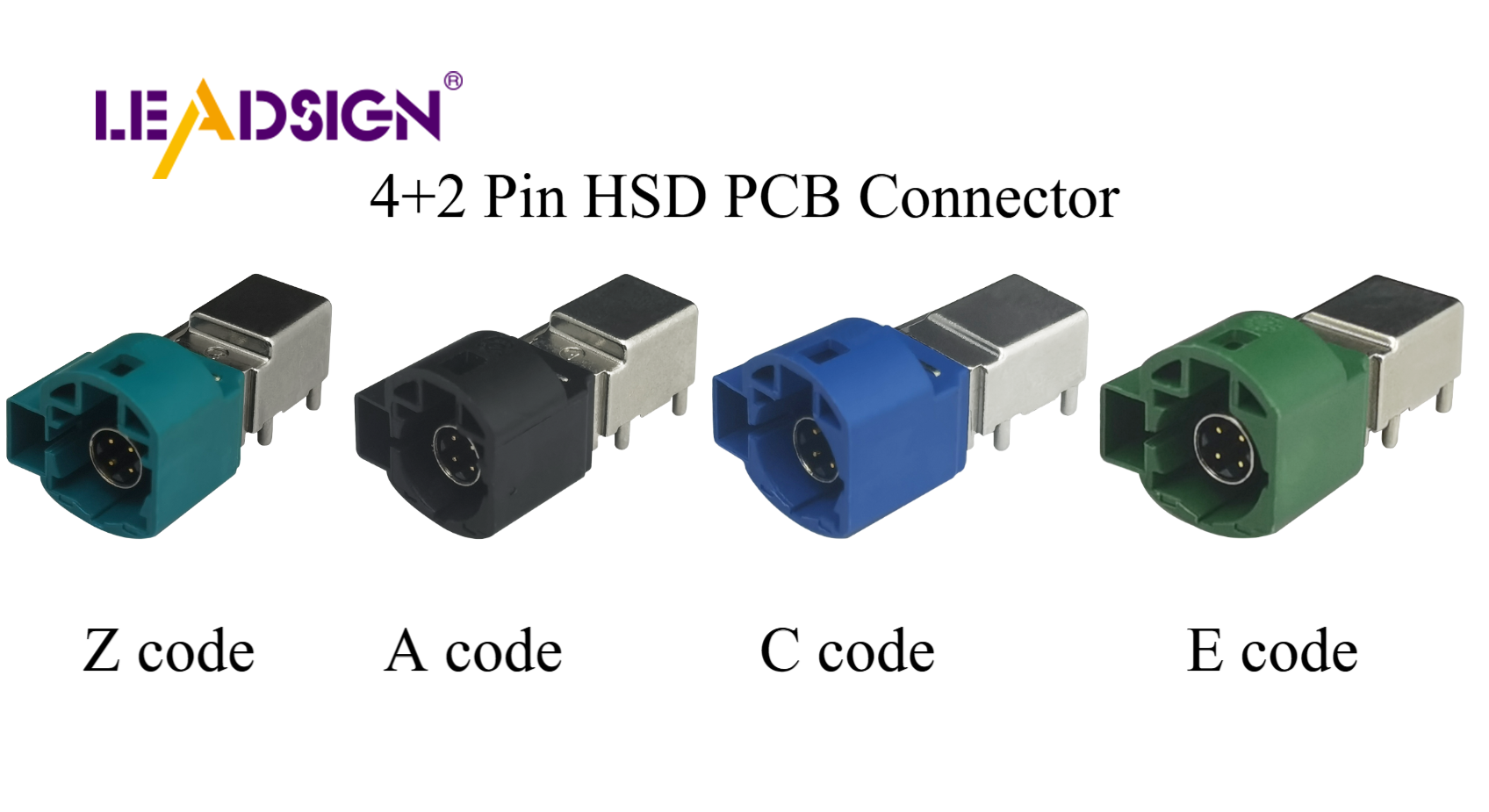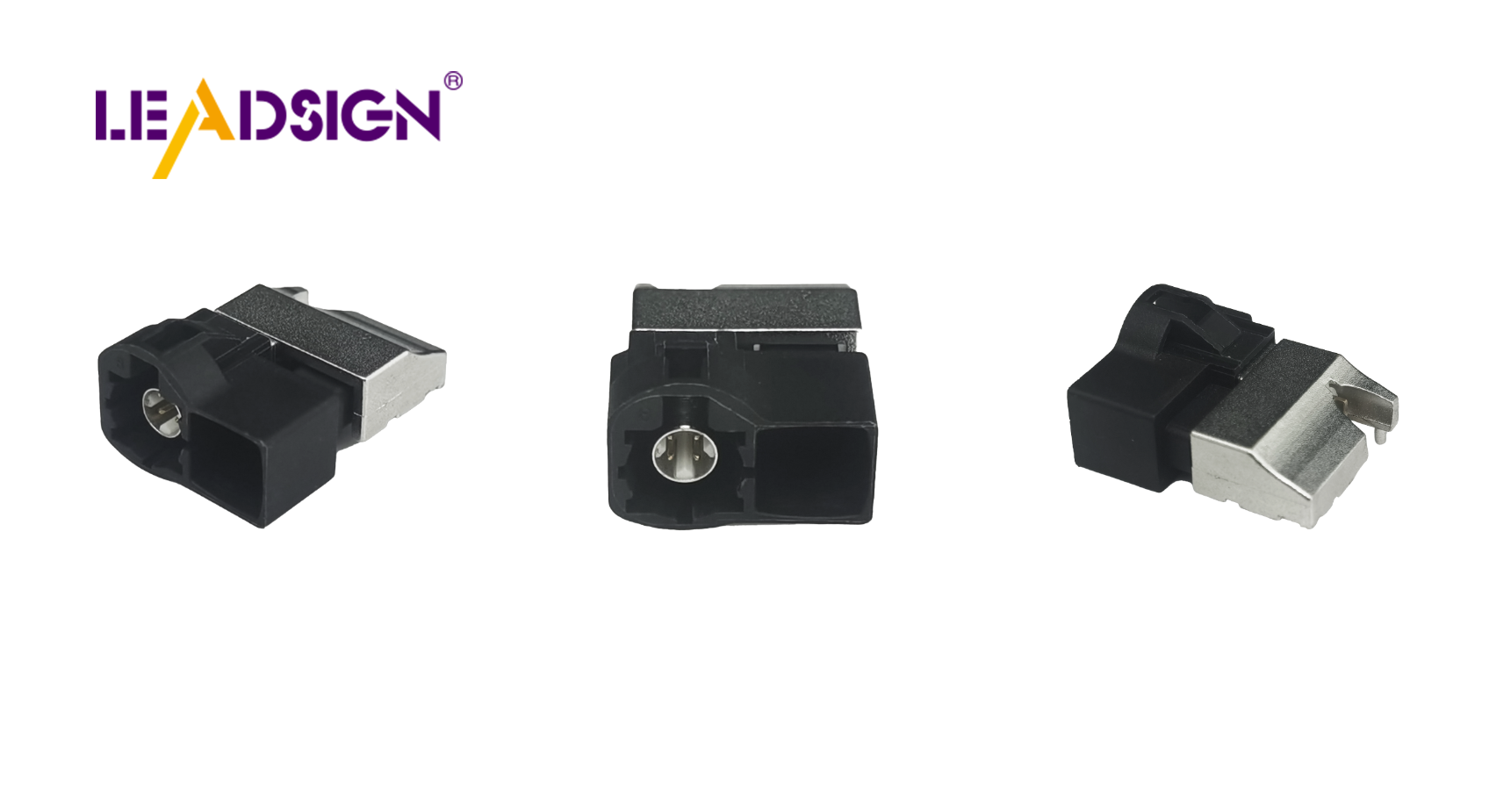The Importance of Car Harness Connectors in Modern High-Speed Data Systems

High-Speed Data (HSD) connectors and cables are very important in cars today. They help send data quickly, supporting systems like ADAS and entertainment. These connectors move data instantly from sensors and cameras. This is needed for cruise control, lane assist, and smooth multimedia use.
Key Takeaways
Fast data connectors help car systems talk quickly, allowing features like self-driving and entertainment to work.
These connectors are made strong to handle tough conditions, lasting longer and needing less fixing.
They cut down signal problems and noise, improving safety and making cars work better and more reliably.
What Are High-Speed Data (HSD) Connectors and Their Role in Automotive Systems?

Definition and Overview of High-Speed Data Connectors
High-speed data connectors are key parts of modern cars. They send data quickly between systems, reaching speeds of 10Gbps or more. These connectors help systems like car entertainment and driver assistance work well. They are made strong with materials like Polyamide (PA) or Polybutylene Terephthalate (PBT). These materials resist heat and last long. Special insulation keeps signals clear, and metal covers block interference. Locking parts keep them secure in vibrating cars, making them perfect for vehicles.
Importance of High-Speed Data Transmission in Modern Vehicles
Fast data transfer is very important in today’s cars. It helps systems talk to each other quickly and reliably. This is needed for advanced tech like self-driving and electric cars. For example, self-driving cars use these connectors to process sensor data fast. Electric cars use them to connect batteries and motors safely. Entertainment systems also need these connectors for smooth Wi-Fi and maps. With speeds up to 10Gbps, these connectors keep all systems running smoothly.
Development and Standardization of HSD Connectors
High-speed data connectors are built using strict rules to ensure they work well. They follow standards from groups like AUTOSAR, ISO, and IEC. These connectors support protocols like USB, Ethernet, and Firewire. Below is a table of key standards:
Protocol/Standard | Description |
|---|---|
AUTOSAR | Rules for car system connectors |
ISO Standards | International safety and quality standards |
IEC Standards | Electrical system standards |
USB | Universal data connection protocol |
LVDS | Low power data signal protocol |
Ethernet | Internet connection protocol |
Firewire | High-speed data transfer protocol |
These rules help create universal connectors, saving money and ensuring compatibility. As faster data speeds are needed, new advancements like IEEE802.3ba aim for speeds of 40Gbps or more.
Technical Features of High-Speed Connectors
Data Transfer Speeds and Signal Integrity
High-speed connectors help cars send data fast and reliably. They support different speeds, as shown below:
Connector Type | Data Transfer Speed |
|---|---|
HSL | Up to 1 Gbps |
Automotive Data Connectivity | Up to 56 Gbps |
HSD Connectors | Up to 10 Gbps or more |
Keeping signals clear is very important for fast data. These connectors solve problems like signal mixing and weakening. They use smart designs and testing to avoid errors. This keeps the data clean and systems working smoothly.
Durability and Environmental Resistance
Cars need connectors that survive tough conditions. High-speed connectors are strong and last long. Their key features include:
Vibration Resistance: Special designs stop damage from shaking and movement.
Water and Debris Resistance: Seals keep water and dirt out, meeting strict standards.
Temperature Tolerance: Strong springs work in very hot or cold weather (-40°C to 140°C).
Assembly and Retention Features: Locks and markers make setup easy and secure.
These features make them perfect for long use in cars.
Compatibility with Automotive Standards and Protocols
High-speed connectors follow strict rules to work well in cars. The table below shows their main features:
Feature | Description |
|---|---|
Standards | |
Temperature Range | Works between -40°C and +85°C (+105°C optional) |
Data Transmission | Supports USB and LVDS speeds |
Bundling Capability | Can group up to 3 headers |
Assembly Efficiency | Fewer parts needed during setup |
PCB Footprint | Takes up less space on circuit boards |
Soldering Process | Can handle high heat soldering without extra steps |
Mating Protection | Mini B is safe from damage when connecting or disconnecting |
Compatibility | Works with common assemblies and uses color-coded plugs |
Routing Flexibility | Fits easily in tight car spaces |
These features help high-speed connectors fit into modern car systems. They support USB, LVDS, and Ethernet protocols.
Applications of High-Speed Data Connectors in Automotive Systems

Infotainment Systems and Multimedia Interfaces
High-speed connectors improve your car's entertainment systems. They help transfer data quickly for features like Wi-Fi and maps. You can watch videos and sync data without delays. These systems work smoothly, keeping you entertained on the road.
Advanced Driver Assistance Systems (ADAS)
High-speed connectors are important for ADAS to work well. They send data fast between sensors and the car's computer. Key features include:
Handling large data and keeping signals clear for quick responses.
Working in tough conditions like heat, shaking, and dirt.
Being small but efficient, fitting into tight car spaces.
These features make them crucial for safety systems like lane assist and cruise control.
Communication Networks and Vehicle-to-Everything (V2X) Systems
High-speed connectors help cars connect with other systems. They send data at speeds from 3 to 12 Gbps. Some systems need up to 24 Gbps for real-time data. RF connectors are key for V2X, like car-to-car or car-to-road communication. These connectors make driving safer and more connected.
Benefits and Future Trends of High-Speed Data Connectors
Better Performance and Dependability
High-speed connectors help car systems work smoothly and fast. They transfer data quickly, up to 10Gbps or more. This speed is needed for systems like ADAS and entertainment. Their strong build handles heat, cold, and shaking, lasting a long time. In self-driving cars, they process sensor data instantly for quick actions. In electric cars, they connect batteries and motors safely, boosting performance and safety.
Less Signal Problems and Safer Cars
High-speed connectors stop signal problems, keeping car electronics working well. They lower noise and block interference, making connections more reliable. This reduces risks like circuit breaks or fires, making cars safer. The table below shows their benefits:
Benefit | Explanation |
|---|---|
Strong electrical connection | Keeps systems connected for normal car functions. |
Lower circuit noise | Reduces noise and interference, improving system performance. |
Safer operation | Lowers chances of circuit issues or fires, improving safety. |
Future Trends: Smaller, Faster, Smarter
High-speed connectors are getting smaller and smarter. Lightweight materials make them tiny but powerful. They now support speeds up to 10Gbps and beyond. As electric and AI cars grow, connectors must handle more data. Designers are creating compact parts that save space but do more. These changes meet the needs of modern cars.
High-speed data connectors are very important in today’s cars.
They help systems like airbags and brakes work safely.
These connectors make sensors and controllers work better.
They are key for ADAS and electric cars, helping them run smoothly.
Their strong features, like lasting design and clear signals, boost car performance.
They cut down on noise and stop signal problems, making systems reliable.
High-power connectors charge EVs faster, saving drivers time.
Tough designs work well in bad weather, needing less fixing.
As car technology grows, these connectors will improve for self-driving cars, electric engines, and live entertainment systems. They will keep making cars safer and better to use.
FAQ
Why are high-speed data connectors important in modern cars?
These connectors help systems like ADAS and entertainment talk fast. They keep signals clear, block noise, and support new car technologies.
Can high-speed connectors survive tough conditions?
Yes, they are built to handle shaking, extreme heat or cold (-40°C to 140°C), and keep out water and dirt. This makes them strong and reliable.
How do high-speed connectors make cars safer?
They send data quickly for systems like lane assist and crash alerts. This helps cars react fast, lowering risks and keeping everyone safe.
See Also
Boosting Data Transfer: Significance of Fast Automotive Connectors
Significance of HSD Connectors in Today’s Technology Landscape
Benefits of Rapid Data Transfer in Automotive Applications
Improving Automotive Data Transfer With Advanced Connectors and Cables

